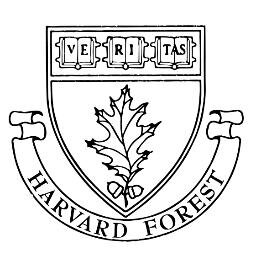Dataset Overview
The "re-wilding" of ecosystems with extirpated large mammals has become a focus of recent scientific and conservation initiatives; however, it is unclear how proposed re-introductions will influence systems that are often vastly different from those that occurred before these animals were extirpated. Moose, the Northeast’s largest Holocene browser, have recently expanded across southern New England’s temperate forest landscape after an absence of 200 years, realizing a natural re-wilding experiment. Moose have been well-studied throughout the boreal forest biome; however, because they are rare today in temperate forests, almost Nothing is known of their ecology, behavior, or potential impacts to these ecosystems. This study investigated patterns of winter moose browse in order to: (1) gain insight into the likely influences of this herbivore on the vegetation patterns of the region; and (2) to identify the most important habitat features influencing moose winter foraging activity at a landscape and site scale.
- Purpose
Two large forested watersheds in Central Massachusetts were sampled for moose browse, habitat features, and disturbances including forest harvesting and human activity. Chi-square and t-tests were used to identify browse species preferences of moose, and step-wise multiple regression was used to identify habitat variables that are strong predictors of browse intensity.
- Data Collection Status
-
Data collection for this dataset has been completed
- Start date
2005-01-01
- End date
2005-12-31
- Data Availability
-
This dataset is available to download from another website
- Data License
Linked - Third party determines data license
- Preferred Citation
Faison E, Foster D. 2009. Moose Foraging in Temperate Forests of Central Massachusetts 2005. Harvard Forest Data Archive: HF115. Available at: http://harvardforest.fas.harvard.edu:8080/exist/apps/datasets/showData.html?id=hf040
- Update Frequency
Unknown
- Maintenance Plan
Not provided
- Links
-
- Moose Foresting in Termperate Forest of Central Massachusetts 2005
- Harvard Forest
- Related Datasets
- Determining Dataset Similarity

